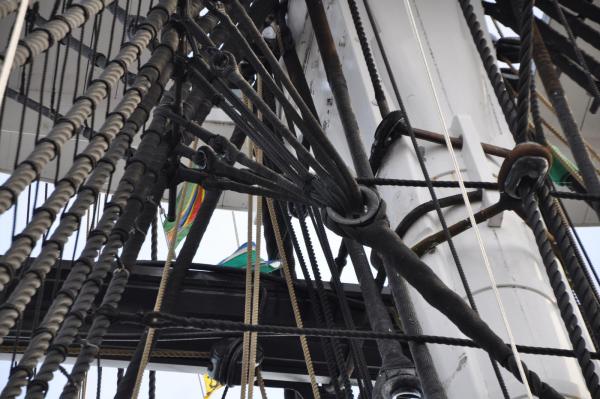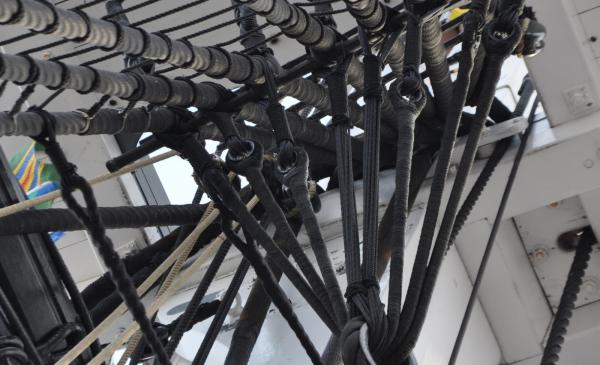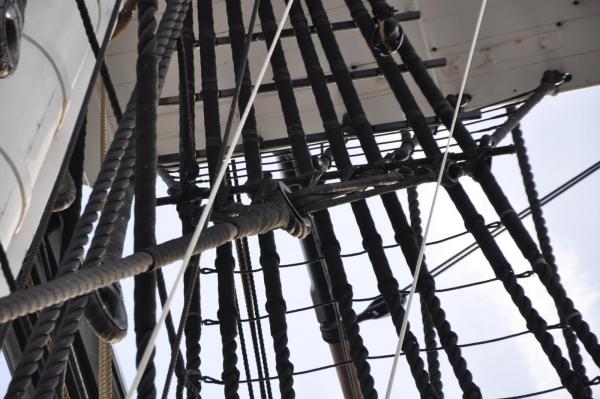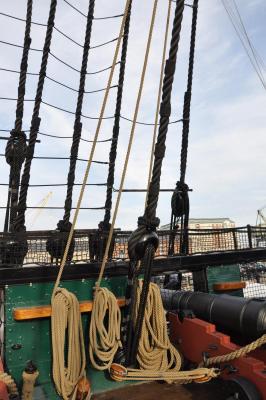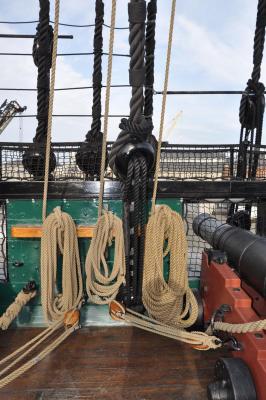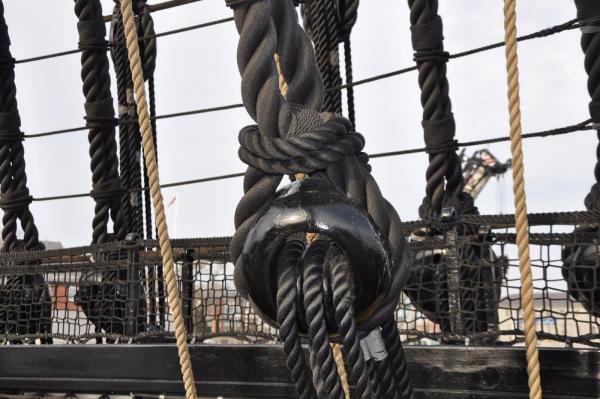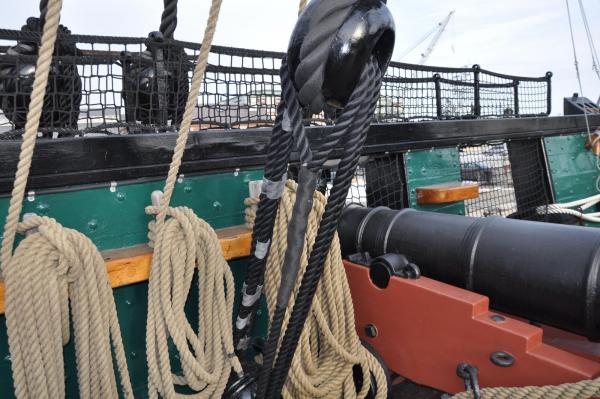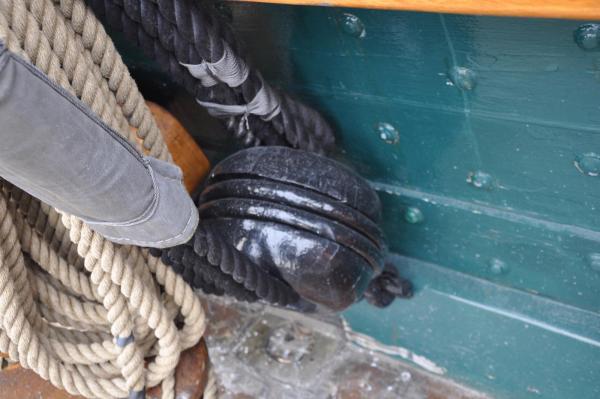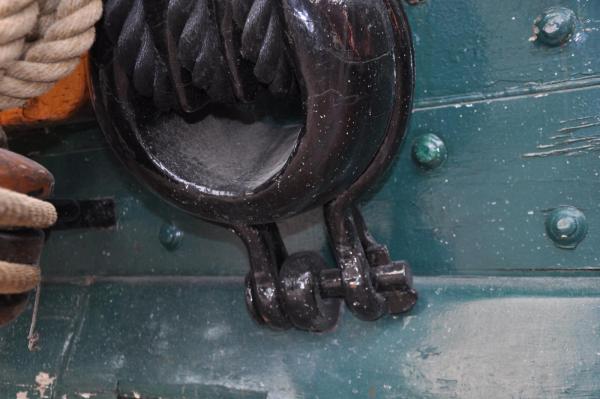-
Posts
1,935 -
Joined
-
Last visited
Content Type
Profiles
Forums
Gallery
Events
Everything posted by popeye2sea
-
The sails are really looking great. I especially like the second photo of the ship in front of the window. The angle and the lighting on the sails shows them off to good effect.
- 732 replies
-
- constitution
- model shipways
-
(and 1 more)
Tagged with:
-
I only play a Marine on TV . I am a retired Navy Chief. I joined an 1812 Marine re-enactment unit to stay involved with the USS Constitution, which I was also stationed aboard for a short time.
-
The distinction between whipping and seizing is that whipping is applied to a single rope to prevent unlaying and seizing is joining two items together. There are several styles of whipping, i.e: plain, palm and needle, sail makers and there are several types of seizings, i.e: cross (or throat), racked, flat and round.
- 732 replies
-
- constitution
- model shipways
-
(and 1 more)
Tagged with:
-
My time aboard USS Blandy DD 943 in the early 80's included plenty of plane guard duty, also. We still used the bos'ns chair to send personnel back across and in return got movies, ice cream and mail. Things really do not change much over the years.
-
I recently read that the purpose of the bentinck shroud was to take the additional stresses imposed from the upper masts when the ship is rolling heavily. The bentinck shrouds were usually set up during heavy weather and not carried all the time. Not sure of the validity of that but I thought it worth mentioning.
- 732 replies
-
- constitution
- model shipways
-
(and 1 more)
Tagged with:
-
That splice looks really good. I have found that the splicing goes a lot easier if you use a needle threader. Push it under the strand and pull the end to be tucked back through.
-
Mihial, I am looking forward to watching your build. You should move this thread to the build log section. You'll get more views and commentary there. Regards, Henry
- 7 replies
-
- soleil royal
- le soleil royal
-
(and 1 more)
Tagged with:
-
Wow Jay, you really captured it. It looks great
- 732 replies
-
- constitution
- model shipways
-
(and 1 more)
Tagged with:
-
Jay, I posted some info and picures in your other thread about the futtock shrouds. Hope it helps.
- 732 replies
-
- constitution
- model shipways
-
(and 1 more)
Tagged with:
-
Jay, I have those pics for you. It looks like the bentinck shroud legs are middled through a thimble eyespliced into the shroud, the splice served. There are 4 legs, the center pair are not actually shroud legs but they look like a long seizing, frapped, between the middle futtock shrouds and the bentinck shroud thimble. The other 3 legs have a thimble spliced into each end with a frapped seizing attaching them to the futtock stave. The shroud legs are served their entire length. The lower end of the bentinck shroud is seized around a heart with a throat and four round seizings. The lower heart is stropped double with two eyes. The eyes are held with a pin through an eyebolt in the waterway. The lanyard starts with an eye splice in the upper heart and the end is hitched round the shroud at the throat seizing end the bitter end seized to one of the parts of the laniard. Also visible in the photos is the attachments of the catharpin legs. You can also see that the bentinck shroud is served where there may be chafe from other rigging. Hope this info helps.
-
Woo Hoo!! first win for me. I respectfully decline my turn at bat. Since I just beat out DFellingham by minutes I will pass the baton to him. Just wanted to see if I could win one of these, plus It seemed like a good reason to try google image search. Happy Searching
-
United States Revenue Cutter Samuel D. Ingham. Texas colors
-
I like it. My kit has neither capstans nor helm. I am thinking about putting them in
- 601 replies
-
- constitution
- revell
-
(and 1 more)
Tagged with:
-
Shrouds were not unprotected. Protection from rot and water penetration was achieved by tarring. I would think that, especially om military ships, extra worming, parcelling and serving would not have been done because it costs money. Ships captains were held to strict allowances for stores and replacements. I would also tend to believe that most would be, like most sailors, practical, prudent, and conservative.
-
In my opinion the information found in any ship modelling book can be applied to any building medium. You will find that most of your research will be about how things were done 'back in the day' as opposed to what materials to use. I am building a ship from a plastic kit, but so far I have kitbashed various items from plastic, steel, brass and wood.
-
Glad to be of assistance.
-
If you seize a loop like one of the mast shrouds you will get both jib boom shrouds coming off a single point. Not what you want. A cut splice would be better. The jib boom shrouds would then come to either side of the jib boom.
-
Not such a young salt. I've been retired from the Navy for 9 years now.
- 732 replies
-
- constitution
- model shipways
-
(and 1 more)
Tagged with:
-
Those coils look great, Jay. Very realistic. They would not be perfect on the real ship either.
- 732 replies
-
- constitution
- model shipways
-
(and 1 more)
Tagged with:
-
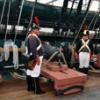
Correct hitch and advice on rigging a flag needed
popeye2sea replied to Gabek's topic in Masting, rigging and sails
Which is why we were always taught to keep control of the downhaul at all times when hoisting flags. It is the mark of a sloppy ship when the flags are allowed to billow out down wind when hoisting.
About us
Modelshipworld - Advancing Ship Modeling through Research
SSL Secured
Your security is important for us so this Website is SSL-Secured
NRG Mailing Address
Nautical Research Guild
237 South Lincoln Street
Westmont IL, 60559-1917
Model Ship World ® and the MSW logo are Registered Trademarks, and belong to the Nautical Research Guild (United States Patent and Trademark Office: No. 6,929,264 & No. 6,929,274, registered Dec. 20, 2022)
Helpful Links
About the NRG
If you enjoy building ship models that are historically accurate as well as beautiful, then The Nautical Research Guild (NRG) is just right for you.
The Guild is a non-profit educational organization whose mission is to “Advance Ship Modeling Through Research”. We provide support to our members in their efforts to raise the quality of their model ships.
The Nautical Research Guild has published our world-renowned quarterly magazine, The Nautical Research Journal, since 1955. The pages of the Journal are full of articles by accomplished ship modelers who show you how they create those exquisite details on their models, and by maritime historians who show you the correct details to build. The Journal is available in both print and digital editions. Go to the NRG web site (www.thenrg.org) to download a complimentary digital copy of the Journal. The NRG also publishes plan sets, books and compilations of back issues of the Journal and the former Ships in Scale and Model Ship Builder magazines.



